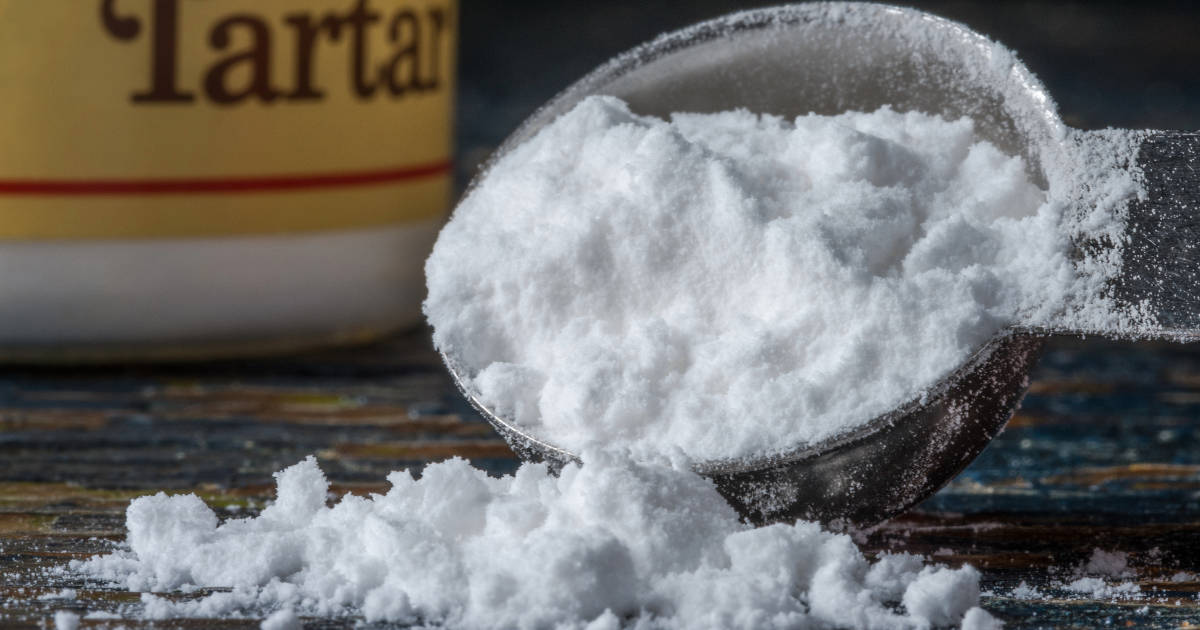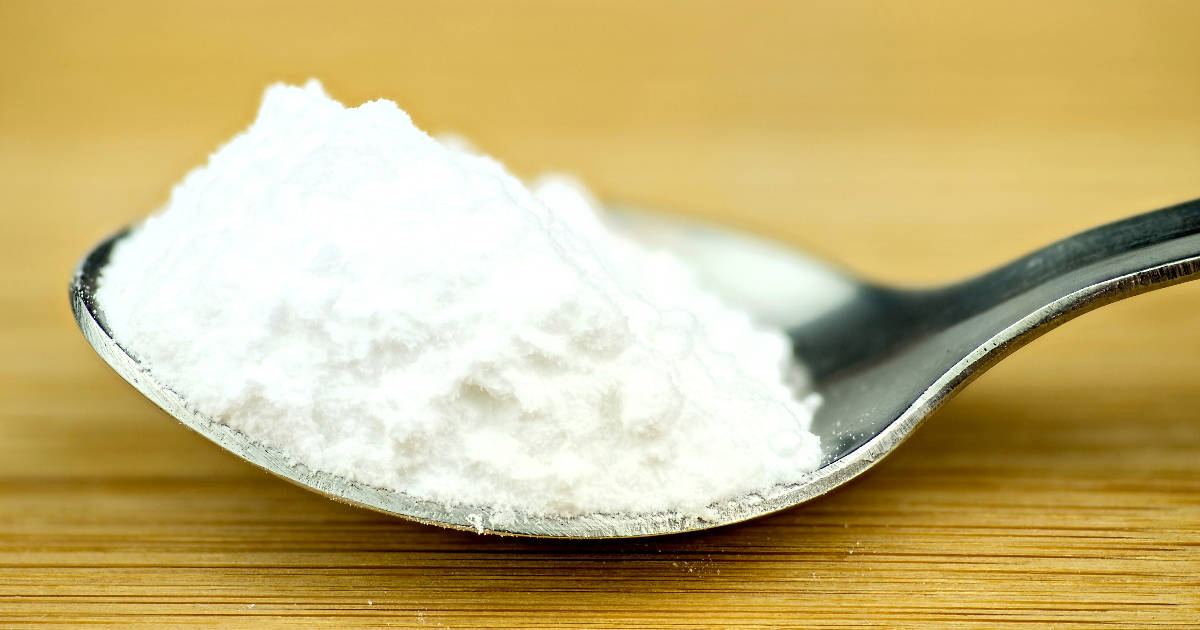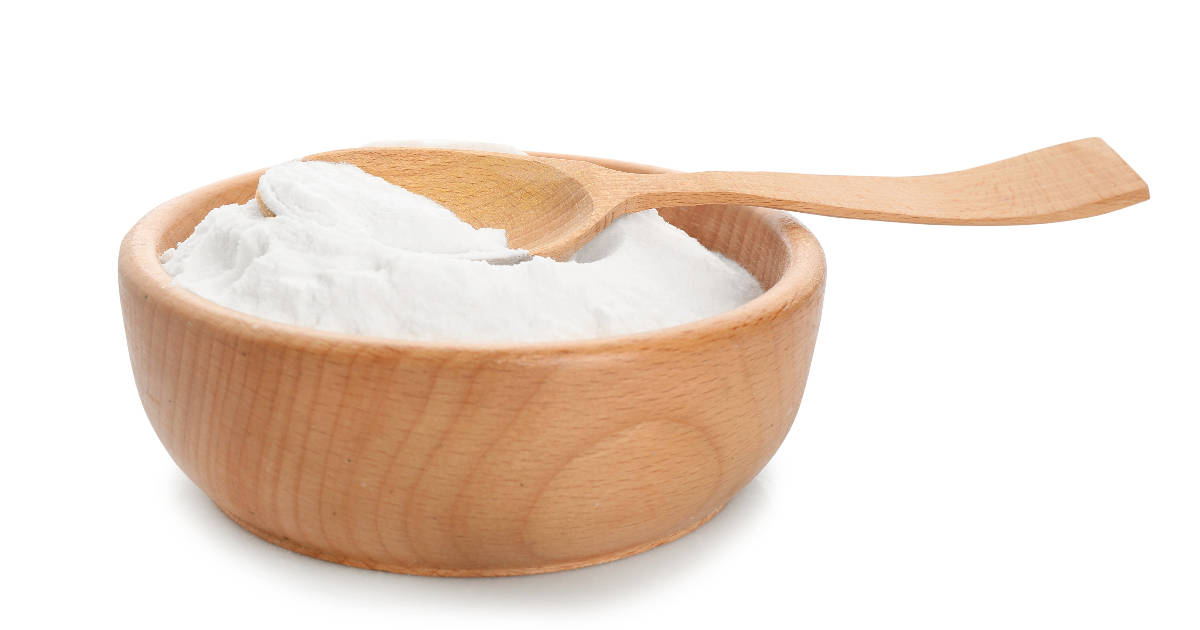Baking powder and cream of tartar are two common ingredients found in many baking recipes. They both serve important functions in helping batters rise and baked goods achieve the right texture. However, there are some key differences between these two leavening agents.

Read on to learn what each one is made of, how they work, their purpose in recipes, and how to properly substitute one for the other. We'll also look at their similarities and differences regarding chemical composition, taste, and more.
What Is Cream Of Tartar?

Cream of tartar, also known as potassium bitartrate, is an acidic white crystalline powder. It is a byproduct of the winemaking process and is derived from the potassium hydrogen tartrate crystals that form on the inside of wine barrels and tanks during fermentation.
Once the wine is drained, these tartrate crystals are left behind. They are then purified and ground into the fine powder known as cream of tartar.
Some of the main uses and benefits of cream of tartar in cooking and baking include:
- Stabilizing egg whites - It helps maintain the whipped peaks in egg white foams and meringues. This allows for finer and more stable air bubbles.
- Preventing sugar crystallization - It interferes with sugar molecules re-bonding, leading to smooth candy and syrups.
- Adds acidity - It can give foods like snickerdoodles a pleasant tangy flavor.
- Aids with volume - It reacts with baking soda to help batters rise (more on this later).
In addition to cooking, cream of tartar has some medicinal uses too, such as treating acid reflux and urinary tract infections. It's also commonly found in toothpaste and cleaning solutions.
Key Takeaway: Cream of tartar is an acidic powder that serves many functions in the kitchen for stabilizing, adding tang, and helping baked goods rise.
What Is Baking Powder?

Baking powder contains cream of tartar as one of its key ingredients. It also includes baking soda (sodium bicarbonate) and sometimes cornstarch.
These components create a double-acting leavening agent that causes batters to rise in two stages:
- When baking powder first gets mixed with liquid ingredients, an acid-base reaction takes place between the cream of tartar and baking soda. This generates carbon dioxide bubbles that provide some initial aeration.
- More gas is produced when the batter is heated in the oven. This second rise happens thanks to the mild acid salts present in the baking powder.
This dual leavening action helps batters expand and attain the desired fluffiness in baked goods. Using the right amount of baking powder is important - too much can make items dense and bitter.
Baking powder is commonly added to recipes for:
- Cakes, cupcakes, muffins
- Pancakes, waffles
- Biscuits, scones
- Cookies
It has a slightly shorter shelf life than cream of tartar and may start losing potency after a year or so. Storing it in an airtight container in a cool, dry place can maximize its freshness.
Key Takeaway: Baking powder causes double-action rising thanks to its combination of cream of tartar, baking soda, and starch.
The Main Differences Between Baking Powder and Cream Of Tartar
Now that we understand the basics of both ingredients, let's compare cream of tartar and baking powder:
| Cream Of Tartar | Baking Powder | |
|---|---|---|
| Composition | Delicate egg foams, candy making, snickerdoodles | Cream of tartar, baking soda, cornstarch |
| Purpose | Stabilizing, acidity, some leavening | Strong leavening |
| Taste | Tangy, sour | No flavor |
| When to Use | Batters and doughs that need to lift | Batters and doughs that need lift |
The main difference stems from baking powder containing baking soda, which cream of tartar does not. This lends more powerful leavening properties to baking powder.
Cream of tartar is more commonly used for stabilizing egg whites, preventing crystallization, and bringing acidity to recipes like Snickerdoodle cookies. However, it can also act as a minor leavening agent when combined with baking soda.
Let's explore a few more differences:
Source and Production
Cream of tartar comes from the byproduct of fermenting grapes during winemaking. The tartaric acid crystals left on the wine barrels are collected, purified, and ground into a fine powder.
Baking powder is manufactured commercially by combining baking soda, cream of tartar, and cornstarch in just the right proportions. Chemical reactions are also carefully controlled to achieve the ideal double-acting properties.
Shelf Life
The shelf life of cream of tartar is generally longer than baking powder if stored properly. Unopened, it can last around 2-3 years in an airtight container in a cool pantry.
On the other hand, baking powder should be replaced every 6-12 months for optimal leavening power. Check expiration dates and do the float test on old containers.
Taste and Reaction
Cream of tartar has a tangy, sour flavor which comes through in the finished baked good, especially when used in higher amounts.
Baking powder is fairly neutral tasting and won’t affect flavor much on its own. However, using too much can give an unpleasant bitter or metallic taste.
Cream of tartar only provides acidity and slows gluten development. Baking powder exhibits a fast chemical leavening reaction when liquid is added.
Uses for Cream Of Tartar vs. Baking Powder
Now let's talk about when to use each ingredient:
Cream of Tartar Uses
- Whipping egg whites into stable peaks for meringues and angel food cakes
- Making smooth, creamy frostings that hold their shape
- Keeping candies and syrups from crystallizing
- Adding tang to cookies like Snickerdoodles
- Dyeing eggs for Easter along with food coloring
- Stabilizing whipped cream so it doesn't deflate too quickly
- Maintaining brightness in vegetable colors when boiling
Baking Powder Uses
- Leavening batters and doughs to make them lighter and fluffier
- Helping quick breads like muffins and scones rise
- Making pancakes and waffles extra fluffy
- Giving lift to biscuits and scones so they are tender
- Leavening cookies to create a soft, cakey texture
So in summary, cream of tartar is more of a stabilizer and flavoring agent, while baking powder is predominantly used for its strong leavening power.
Key Takeaway: Cream of tartar is optimal for whipping egg whites and preventing crystallization. Baking powder is best for leavening baked goods.
Substituting Between Cream of Tartar and Baking Powder
Since baking powder contains cream of tartar, these two ingredients are somewhat interchangeable in recipes depending on the quantities used. Here are some substitution tips:
- In place of 1 tsp cream of tartar, use 11⁄2 tsp baking powder
- To replace 1 tsp baking powder, use 1⁄2 tsp cream of tartar + 1⁄4 tsp baking soda
- For every 1 tbsp cream of tartar, substitute 1 tbsp lemon juice or white vinegar
- Remove 1 tbsp liquid from recipe for every 1⁄4 tsp cream of tartar, replacing it with 1 tbsp buttermilk
When substituting baking powder for the cream of tartar, expect a bit more lift but potentially less stability. Replacing baking powder with cream of tartar will result in less rise unless baking soda is also added.
Test substitutions in small batches first to ensure measurements are modified appropriately for the recipe. Avoid swapping in ingredients if the recipe relies specifically on the cream of tartar for stability or baking powder for loft.
Key Takeaway: With proper adjustments to the quantities, cream of tartar and baking powder can often be interchanged in recipes.
Similarities Between Cream Of Tartar and Baking Powder
While the cream of tartar and baking powder differ in some ways, they do share a few commonalities:
- Both are white powders with a crystalline appearance
- They provide acidity that helps batters rise
- Each one can stabilize whipped egg whites
- They have a nearly indefinite shelf life if stored properly
- Small amounts are used - often 1 tsp or less per recipe
So in summary, both ingredients are timeless baking staples that can help make batters and egg foams lighter. Having some knowledge of their unique properties will let you leverage them properly.
Key Chemical Differences
On a chemical level, the compounds that make up these two pantry staples vary significantly:
- Cream of tartar is potassium bitartrate - an acidic salt derived from grapes.
- Baking powder contains baking soda (sodium bicarbonate) plus an acidic ingredient like cream of tartar or calcium phosphate.
These differences in composition lead to differing reactions when each one is combined with wet ingredients in a recipe. Baking powder creates bubbles of carbon dioxide for an immediate quick rise. Cream of tartar just contributes acidity to recipes.
Impact on Flavor and Taste
When it comes to their effect on flavor, cream of tartar and baking powder diverge as well:
- Cream of tartar has a sour, tangy taste which comes through especially when larger quantities are used.
- Baking powder is quite neutral and won’t alter the flavor of whatever it’s added to.
Too much baking powder can impart a bitter, chemical aftertaste. Excess cream of tartar gives an overwhelming sourness. So amounts of both should be kept modest.
Conclusion
Cream of tartar and baking powder are not interchangeable despite some superficial similarities.
Here are some key takeaways:
- Baking powder contains baking soda and starch to induce rising through chemical leavening. Cream of tartar is an acidic byproduct of winemaking that stabilizes and flavors.
- Cream of tartar brings tanginess and structure to recipes. Baking powder simply causes lift without affecting taste.
- For egg foams and preventing crystallization, cream of tartar is the choice. For leavening baked goods, baking powder is optimal.
- With proper modifications to the quantities, these two ingredients can often substitute for each other.
Keeping both baking powder and cream of tartar stocked ensures you'll achieve the right texture and rise in all your cakes, cookies, and bread.

